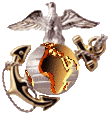

Operation Prairie I
As 1967 began, the 3d Marine Division was fighting two wars: a conventional one along the DMZ, where division confronted division, and a counter guerrilla war in the rest of Quang Tn and Thua Thien provinces. Although committed to both campaigns, the situation forced the division to give priority to the DMZ.
During January, the enemy avoided major ground contact with ARVN and Marine units in the DMZ area, but the NVA did maintain energetic screening and reconnaissance efforts south of the DMZ. Mortar and rocket attacks on friendly positions increased sharply, particularly during the period 8-28 January, and there was a noticeable increase in local and main force guerrilla activity throughout the month.
In January Marine units were still conducting Operation Prairie along the DMZ. Three battalions of Colonel John P. Lanigan’s 3d Marines and the 3d Battalion, 4th Marines were operating from combat bases along Highway 9. The largest of the combat bases, the nerve center for the entire area, was at Dong Ha, the command post (CP) of the 3d Marine Division (Forward), the controlling headquarters for the operation.
The intermediate position at Cam Lo was seven miles west. Four miles further west, Camp J. J. Carroll was occupied by artillery units of the 12th Marines, reinforced by U.S. Army 175mm self-propelled guns. An additional artillery position, the Rockpile, was near the base of a jagged mountain six miles west of Camp Carroll. The last and most westerly of the combat bases was Khe Sanh, only a few miles from the Laotian border. In addition to these major positions along Highway 9, Marines were establishing two strongpoint just south of the DMZ at Con Thien and Gio Linh.
One feature of Operation Prairie was the provision of a specific “package” of aircraft for support of the 3d Marine Division. In this manner the wing increased its efficiency and decreased response time for missions within the DMZ region. The “package” contained a variety of helicopters, such as UH-lEs, CH-46s, CH-37s, and fixed-wing observation aircraft. A total of 40 helicopters and 8 0-1 observation aircraft supported the division daily. Marine air support radars (TPQ- 10) provided the capability of conducting radar-controlled bombing missions during bad weather and at night.
Operation Prairie I ended on 31 January. At its height the operation involved six Marine infantry battalions. It accounted for the largest number of enemy casualties in a single Marine operation to that date: 1,397 killed and 27 captured. Marine casualties for the same period were 239 killed and 1,214 wounded.
PAUL MARQUIS
WEB MASTER
SOURCE CITATION:
THE ABOVE OPERATIONS ARE CREDITED
TO 1/3 COMBAT HISTORY FILE AND THE BOOK, "SEMPER FI VIETNAM"
